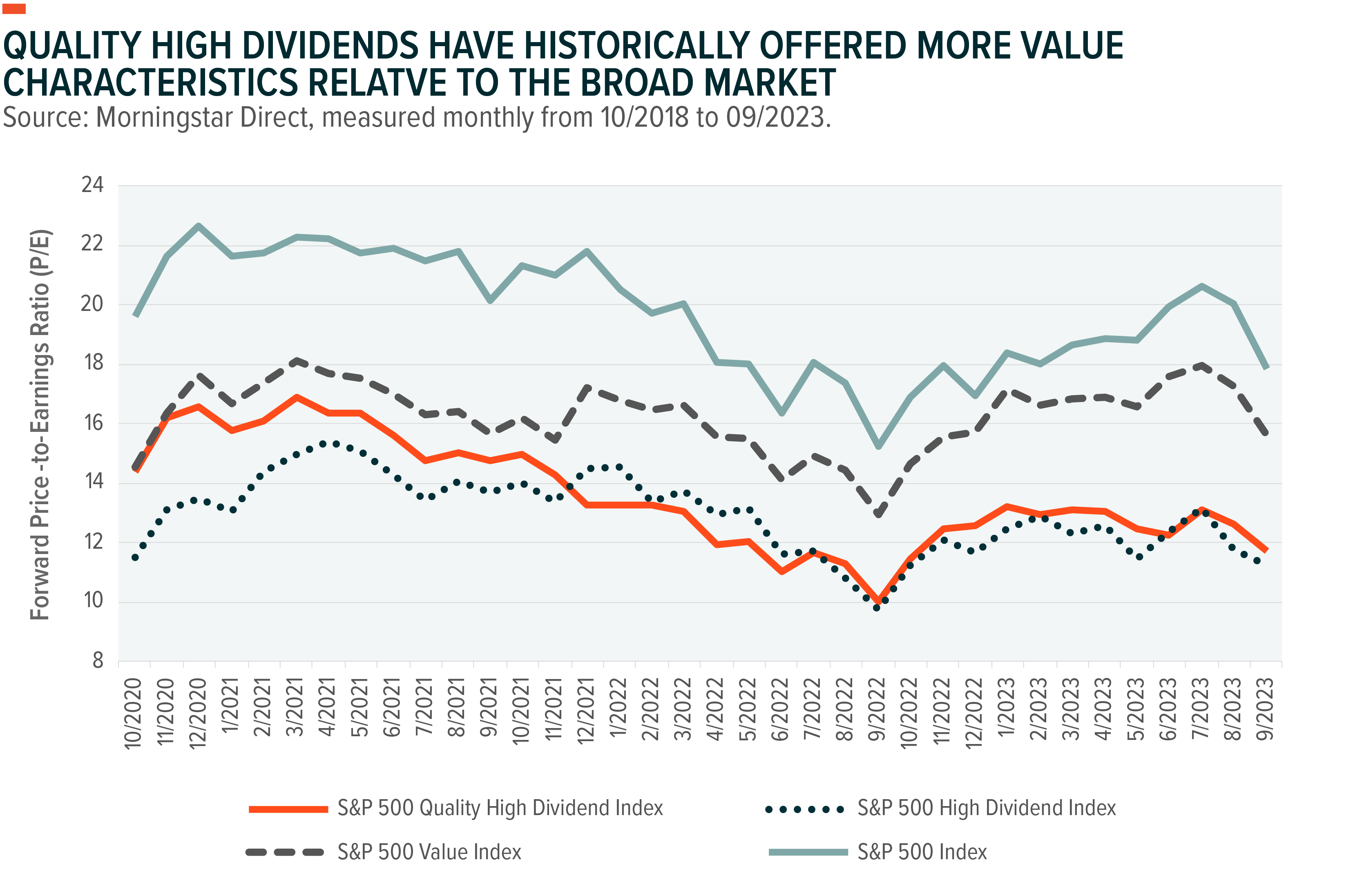Factors like quality and dividend yield can be useful in explaining portfolio risk and return while potentially providing superior risk adjusted returns relative to the market (e.g., the S&P 500) at a lower annual expense than actively managed funds, based on research from 2013.1 In this report, we explore the investment thesis of a quality dividend strategy that focuses on companies exhibiting a blend of both quality and high dividend yield factors.
There are some signals indicating that the global economy is in the latter stages of its current business cycle and, in our view, quality dividend stocks could be a useful allocation for investors seeking to re-position portfolios towards sectors and equities that may hold up better in this type of market environment. Against this backdrop, we believe an investment product like the Global X S&P 500 Quality Dividend ETF (QDIV) may be appropriate for certain income and total return-oriented investors.
Key Takeaways
- QDIV tracks the S&P 500 Quality High Dividend Index, which is designed to measure the performance of S&P 500 constituents that exhibit both high quality and high dividend yield characteristics. This results in different sector weights relative to the S&P 500 and exposure to entities with more value characteristics.
- Individual factors can provide different portfolio characteristics for investors relative to broad equity holdings (such as historically high dividend yield). However, these factors may perform cyclically, so using them in combination can potentially smooth a portfolio’s performance.
- A quality dividend overlay on the S&P 500 may reduce the level of concentration risks found within technology-sector leaning, U.S. index-based strategies. With technology sector valuations seeming stretched, investors may want to employ a counterbalancing exposure.
How QDIV Invests
Quality can encompass a wide range of measurements, and dividend yield as a factor can refer to high-yielding or dividend growth, so it is important to understand the attributes of a quality dividend strategy. Here, we seek to describe the construction behind the Global X S&P 500 Quality Dividend ETF (QDIV).
QDIV invests in companies from the S&P 500, which consists of the largest (by market capitalization) U.S. listed companies. The S&P 500 Quality High Dividend Index, which QDIV is designed to track, identifies the top 200 companies from the S&P 500 by indicated annual dividend yield and the top 200 companies based on a quality score. The quality score is derived from:
- Return on equity: measured by company’s net income divided by its shareholder’s equity.
- Accruals ratio: measured by changes in net operating assets over time.
- Financial leverage: measured by debt to equity.
The index is comprised of companies that fall into the top 200 of both factors (subject to a minimum of 50 stocks), and currently comprises 73 stocks.2 To reduce sector or company-specific concentrations, constituents are equal-weighted, subject to a single sector maximum weighting of 25%.
This construction results in a different sector mix relative to the S&P 500, but also tilts away from ‘mega cap’ stocks. The largest 5 stocks in the S&P 500 (Apple, Microsoft, Amazon, Google, and Nvidia) comprise 23.7% of the index, none of which are currently present within the S&P 500 Quality High Dividend Index.3 Additionally, the largest constituent within the S&P 500 Quality High Dividend Index as measured by market cap is valued at $468 billion, compared to $2.7 trillion for the S&P 500.4
Given these significant exposure differences, this quality divided strategy has historically offered elevated dividend yields relative to the broader S&P 500.
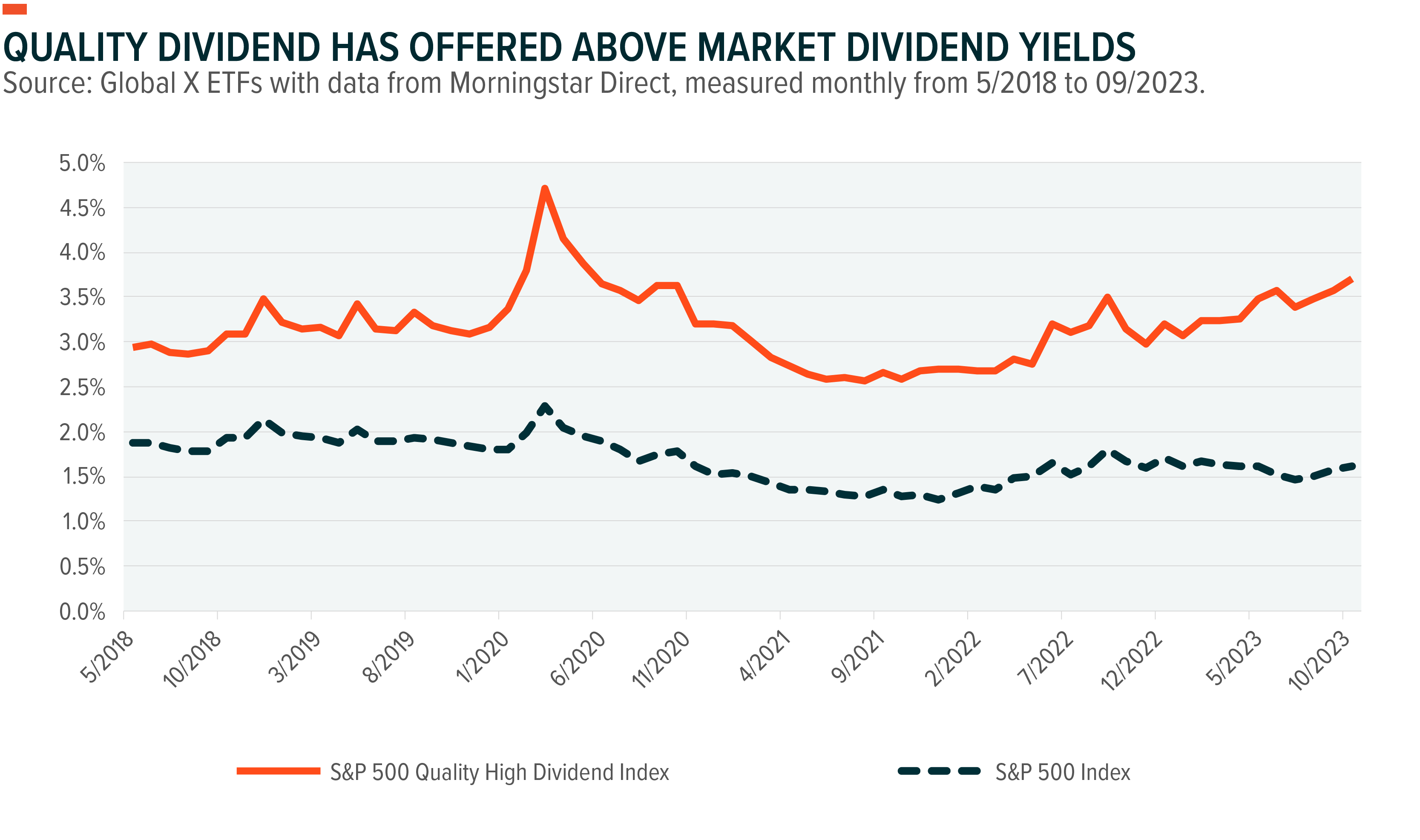
Index data is for illustrative purposes only and does not represent actual Fund performance. Index returns do not reflect any management fees, transaction costs or expenses. Indexes are unmanaged and one cannot invest directly in an index. Past performance does not guarantee future results. For QDIV performance, please click here.
Adding in the quality screen differentiates the index from high dividend strategies that seek high yielding equities but do not have explicit screens for company fundamentals. This has historically led to a level of index outperformance as it offers the potential to remove S&P 500 companies with deteriorated balance sheets.
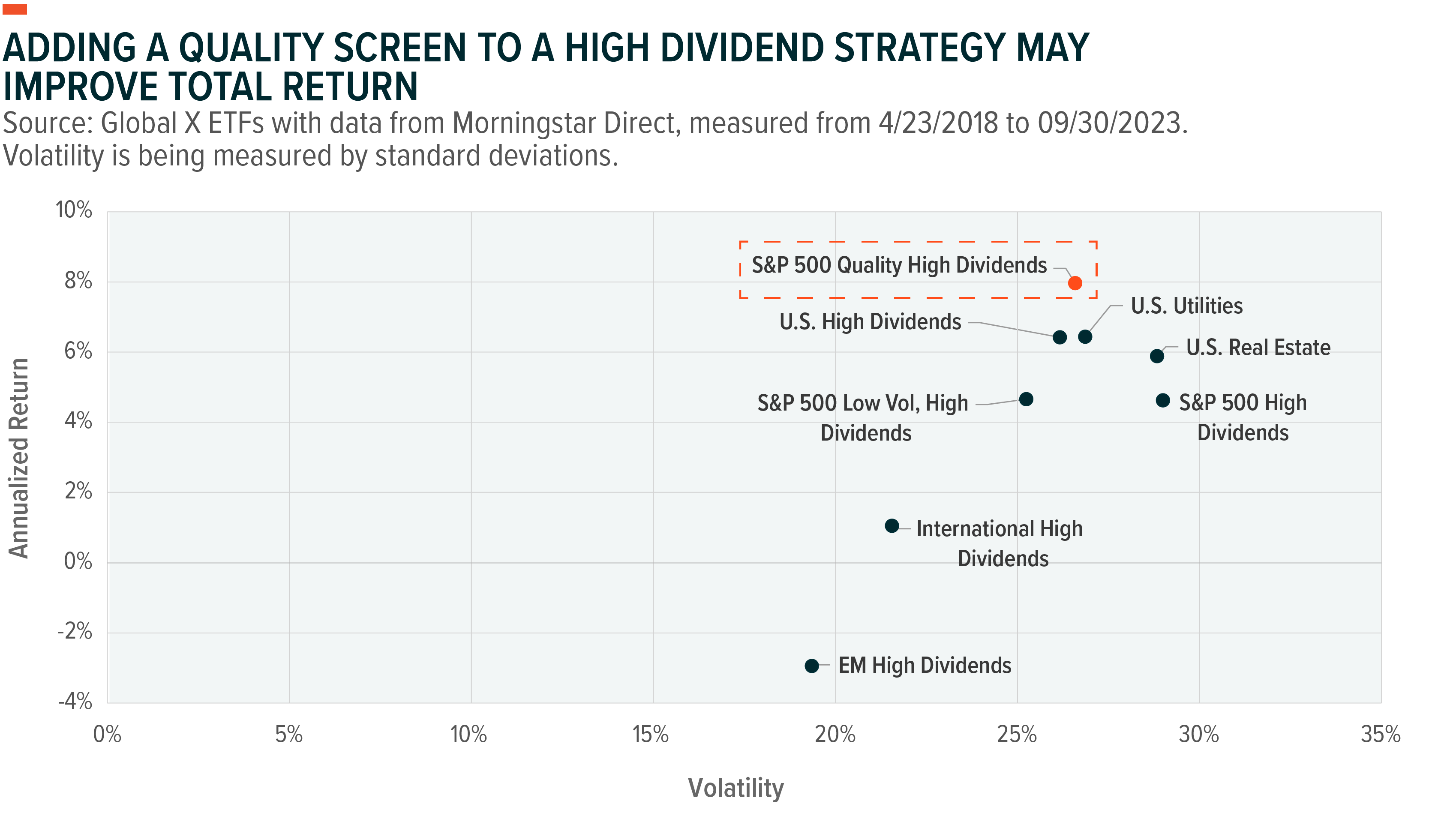
Asset Class representation are as follows: U.S. Utilities, Utilities Select Sector Index; U.S. Real Estate, Real Estate Select Sector Index; U.S. High Dividends, Dow Jones U.S. Select Dividend Index; S&P 500 Low Vol, High Dividends, S&P 500 Low Volatility High Dividend Index; International High Dividends, Dow Jones EPAC Select Dividend Index; EM High Dividends, Dow Jones Emerging Markets Select Dividend Index. Index returns are for illustrative purposes only and do not represent actual Fund performance. Past performance does not guarantee future results.
Quality Screen Overlays on a High Dividend Strategy May Enable Higher Total Return Potential
S&P defines quality using well defined characteristics based on financial variables, as this provides a quantifiable approach to portfolio construction. The index construction methodology combines the quality characteristics tilt with a high yielding focus.
On its own, the quality tilt can lead to more expensive and lower dividend-yielding companies, while a high-yielding focus may result in more cyclically exposed companies. For example, without a quality screen, a high dividend portfolio may have more exposure to resource companies that have high earnings and pay large dividends in certain years but earn less and reduce dividends substantially in others.
But when combined, the result is a portfolio of companies comprising both quality characteristics and a high-yielding focus. This blend effectively results in a third factor, differing from quality or high dividend factor portfolios. MSCI notes that individual factors can perform cyclically depending on market conditions, and therefore using a combination of factors can potentially the smooth the performance of a portfolio.5 As the chart below shows, fundamentals notably improved when adding a quality screen on top of an already existing high dividend yield screen.
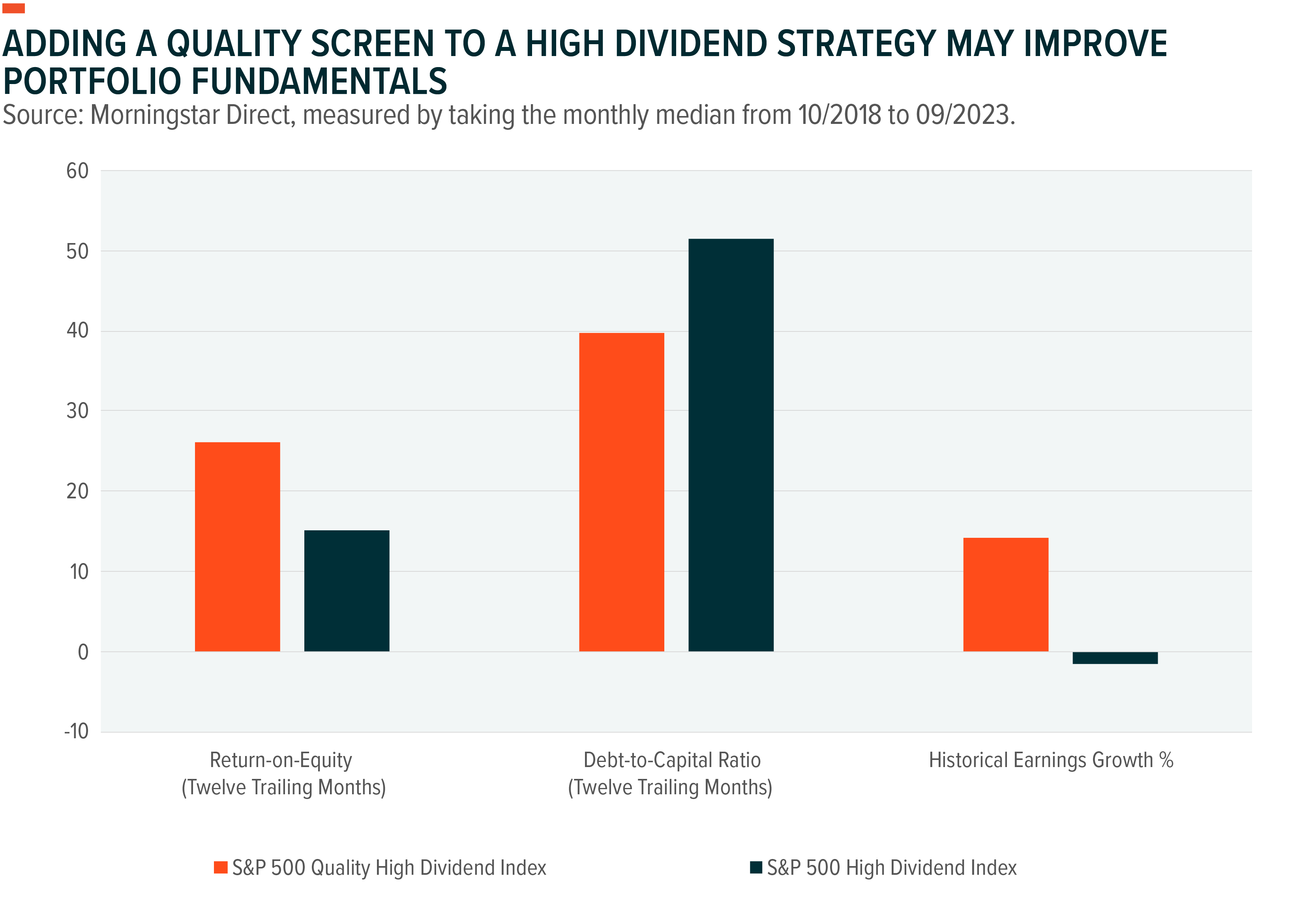
Additionally, the quality and high dividend combination can result in a tilt toward value characteristics such as lower forward price-to-earnings (P/E) ratios than the broad S&P 500. Should equities fall to establish lower earnings multiples, the value orientation may offer lower volatility relative to higher multiple portfolios due to the lower starting valuation.
Late Cycle Dynamics Can Favor Quality High Dividend Companies
Business cycles do not always fit neatly into a box with all variables perfectly aligning with a specific stage of the cycle. However, based on the framework of key business and macroeconomic variables illustrated in the diagram below, the current period could be classified as the later stages of the business cycle. Inflation remains a concern and is above the Federal Reserve’s (Fed) target. Interest rates have stayed elevated as a result. S&P 500 constituents’ operating margins reached a high of 13.5% in June 2021 (compared to a 10-year average of 10.5%) and may have peaked for this cycle as they have stayed stagnant at 11.8% since September 2022.6
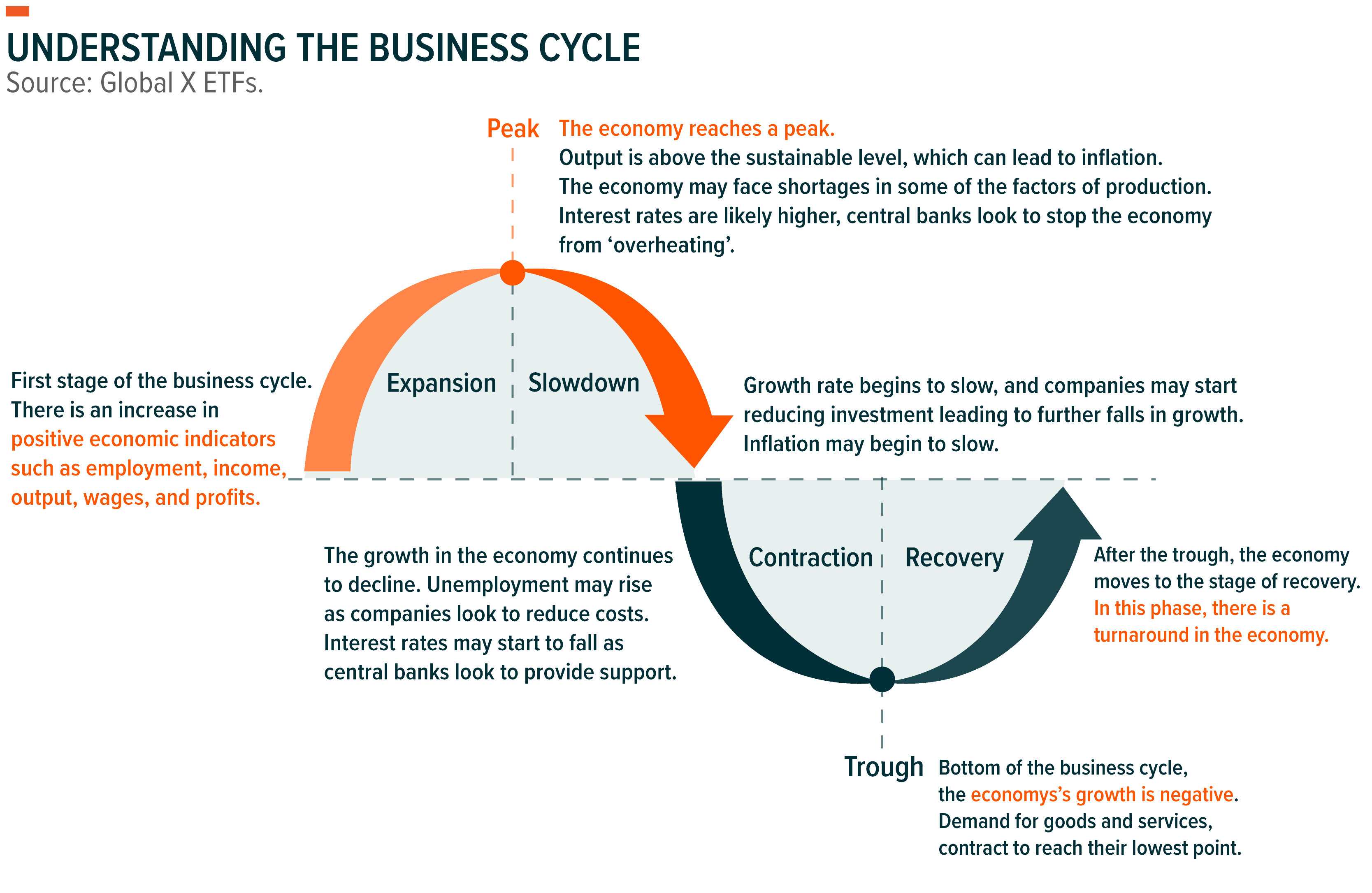
As economic growth slows from peak levels, and earnings growth subsequently follows, quality companies should be those that can maintain earnings and their financial health. By holding less debt and maintaining profitability, these companies may be less exposed to rising interest payments and be less reliant on raising capital to continue pursuing investment opportunities. We can see an example of this in the performance of unprofitable tech companies compared to the S&P 500 Quality High Dividend Index from the COVID rebound. Loose monetary policy measures boosted unprofitable names in 2020 and into the COVID rebound in early 2021. However, amidst elevated real (inflation-adjusted) interest rates, quality dividends have outperformed with investors moving toward stronger and more profitable companies.
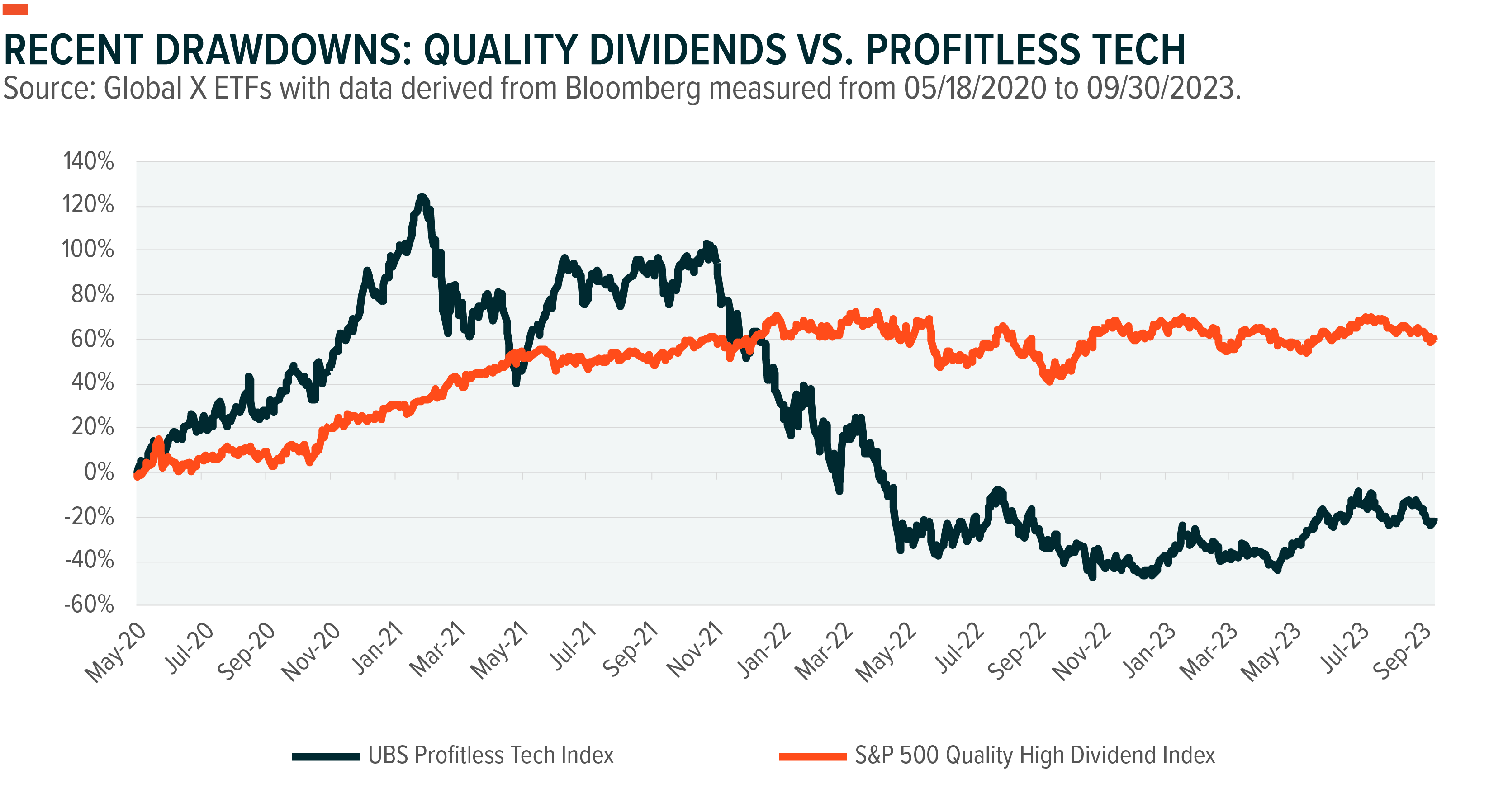
Quality High Dividends May Offer A Hedge Against Growth Style Underperformance
Late cycle periods may feature stretches of flat returns or volatile returns as investor sentiment shifts. Historical performance data for quality high dividend against the broader S&P 500 is limited, but it can provide insight into when quality high dividend may outperform and to what extent.
The chart below shows drawdowns from peak to trough, with the S&P 500 and S&P 500 Growth indices outperforming quality high dividend in the COVID selloff in 2020. Quality high dividend outperformed in the drawdown selloffs that began in Q4 of 2018 and early 2022 with a key common catalyst: rising interest rates.
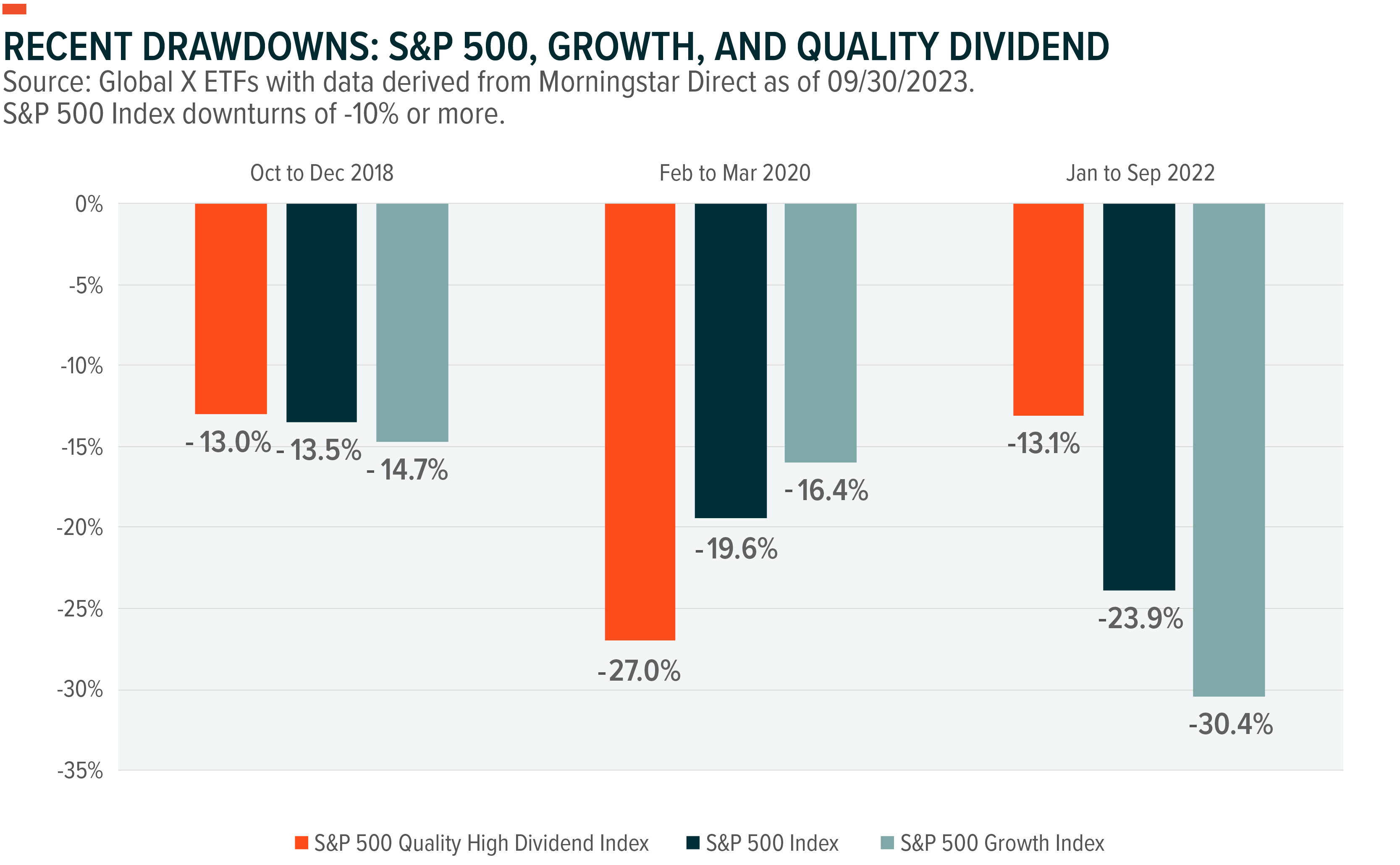
A higher dividend yield from quality dividend companies may also improve relative performance during extended periods of flat or negative returns due to the relatively consistent positive nature of dividends, as total return is derived from the price return plus the dividends received during that period. In rising interest rate periods, technology sector equities tend to be negatively impacted more than others since their future cash flows and profits are projected further out into the future at these new, higher levels. Recent valuation expansion within the technology sector has been a result of progress in artificial intelligence technology and as sector constituents compete for market share, the necessary capital is likely to come at a higher cost.
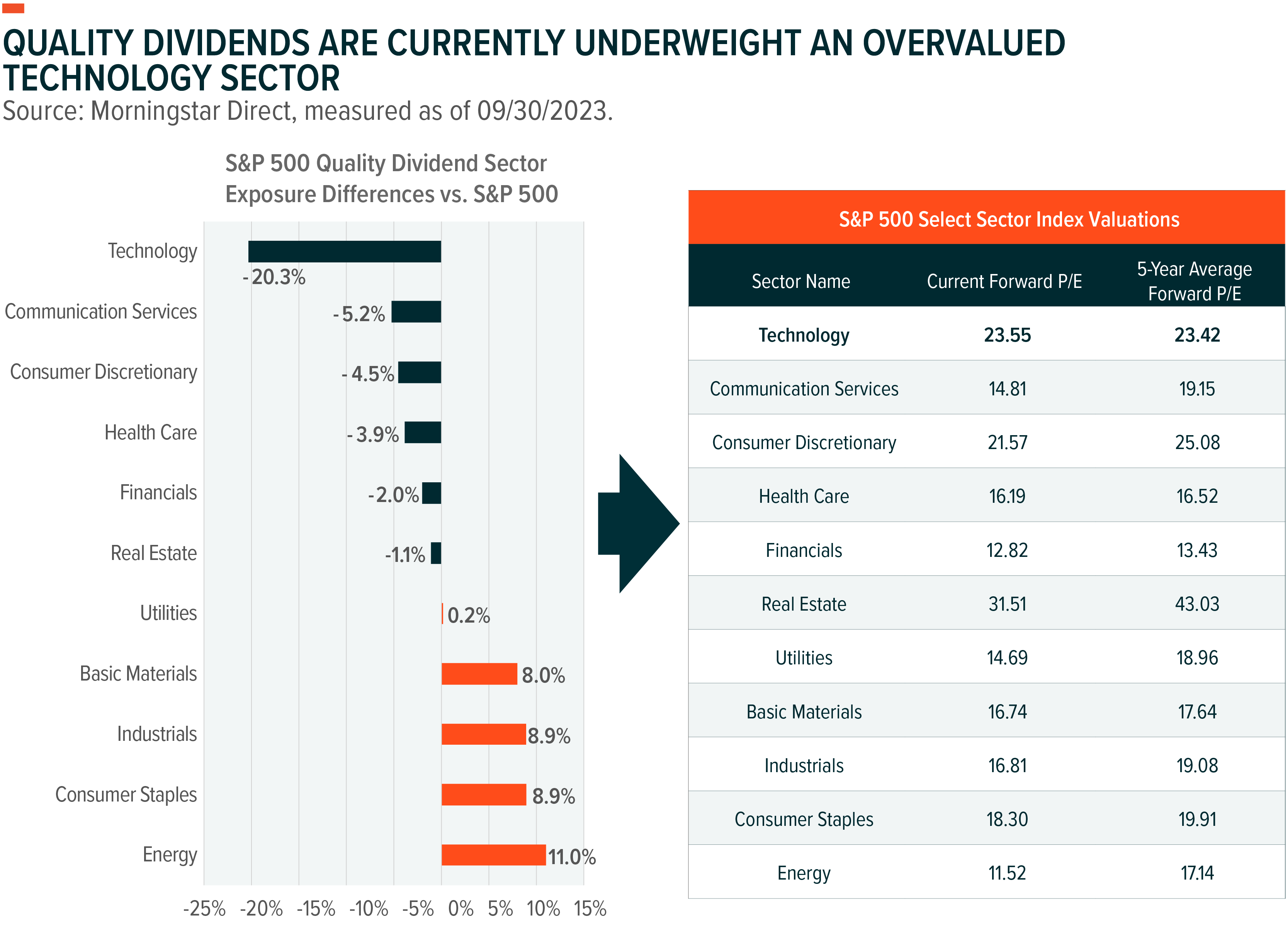
Conclusion: A Potentially Attractive Combination for the Late Cycle
The use of factors as an investing strategy, and specifically dividend ETFs, is expected to increase amongst income-oriented investors. Notably, dividend ETFs have seen $112B in net new assets over the last 3 years, surpassing all other strategic beta strategies.7 Additionally, the S&P 500 has become more concentrated towards a handful of very large companies in which the top 10 holdings within the S&P 500 index encompass 30% of constituent exposure.8 Using the Global X S&P 500 Quality Dividend ETF should alleviate these concerns, as the ETF equally weights its portfolio upon each rebalance.
Many investors are searching for investments that can perform in this later stage of the business cycle. In our view, a quality high dividend strategy can offer a diversified portfolio of potentially higher yielding and more financially resilient companies. However, it can also perform relatively better than the broader market in late cycle periods, potentially making it a tactical medium-term play for certain investors.
Related ETFs
QDIV – Global X S&P 500 Quality Dividend ETF
Click the fund name above to view current holdings. Holdings are subject to change. Current and future holdings are subject to risk.
 Rohan Reddy
Rohan Reddy